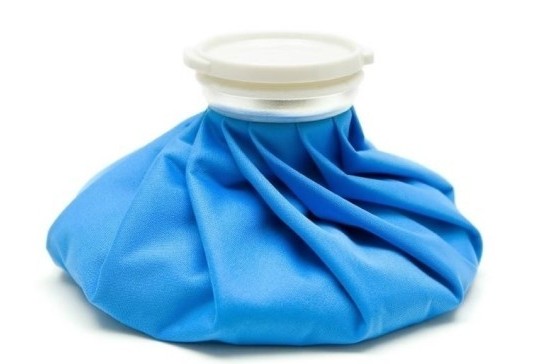

Typically this is most effective 24-48 hours after your injury. This process can be made a bit easier with a hands-free option like our knee ice brace. How Long Should You Ice an InjuryĪfter an initial injury apply ice only, on and off, in 20-minute intervals until the swelling has subsided. Broadly speaking, this can be done through local applications, or through total body immersion. There are several different methods for delivering hot and cold therapies to the body.
#Warm or cold compress for eyes how to
More About When to Use Heat for Injuries How to Do Hot and Cold Therapy The injuries and conditions below follow the rule of ice first, heat later. Once initial swelling goes down heat may provide soothing relief and promote blood flow in order for your body to heal. Generally the rule is to apply ice first to reduce swelling. With this gentle method, you can simultaneously reduce inflammation, stimulate circulation, and loosen tight muscles, thereby easing your pain. Sometimes, choosing one over the other simply may not provide enough relief, which is where contrast therapy comes in. Learn More About Apply Heat to Injuries Here Alternating Hold and Cold Therapy BenefitsĬlearly, both ice and heat bring something to the table in terms of pain relief and healing. Unlike ice, heat can make inflammation worse. It also draws nutrients (via the blood) to the injured area, aiding the healing process, while helping the body’s cells get rid of waste products. This reduces pain and relieves cramping or aching muscles. Heat therapy works in the opposite manner-it is a vasodilator, which increases circulation by expanding the blood vessels. On the other hand, ice can make muscle tension and spasms worse. The muscles contract, inflammation is lowered, and pain signals are reduced. It is effective because it causes vasoconstriction, or narrowing of the blood vessels.

The use of ice, or very cold temperatures, in a therapeutic capacity is known as cryotherapy. Freeze it for cold therapy or warm it in the microwave for heat. When alternating between hot and cold therapy, a hot-and-cold therapy pack is a useful tool to have on hand. In order to understand the benefits of contrast therapy, it’s useful to know exactly when and why heat and ice work for pain relief-and when they don’t. Why Alternating Hot and Cold Therapy is Good for Injuriesīoth heat and ice have their uses in treating injury. Keep reading to find how and when to use contrast therapy. This simple, affordable, and relatively low-risk treatment can be performed in your own home to provide rapid and natural pain relief for all sorts of aches and pains. This technique is known as contrast therapy, or alternating hot and cold therapy, and involves alternating applications of heat and ice to relieve the pain associated with injury or overexertion.
#Warm or cold compress for eyes skin
Be careful if you do so around the eye area since the skin here is more sensitive. Applying a warm compress to promote the movement of fluid buildup.Applying a cold compress to the swollen area.Increasing your water and fluid intake.The National Heart, Lung, and Blood Institute recommends sleep as an integral piece of physical health and healing. Some of the more common ways to reduce facial swelling include: Once you know what you’re dealing with, you can come up with a plan of attack. Your doctor will be able to help you determine the exact cause of the swelling and recommend the appropriate treatment plan.

If the swelling is a result of an injury or allergy, you should seek medical attention before trying any type of at-home treatment or remedy. Other treatment may focus on reducing swelling caused by impact fractures, allergic reactions, teeth problems, sinus issues, or other medical conditions. Generally speaking, treatments for facial swelling focus on taking care of swelling around the eyes and eyelids, cheeks, or jaw.


 0 kommentar(er)
0 kommentar(er)
